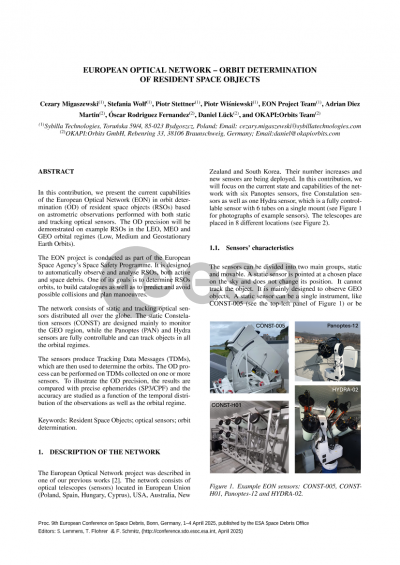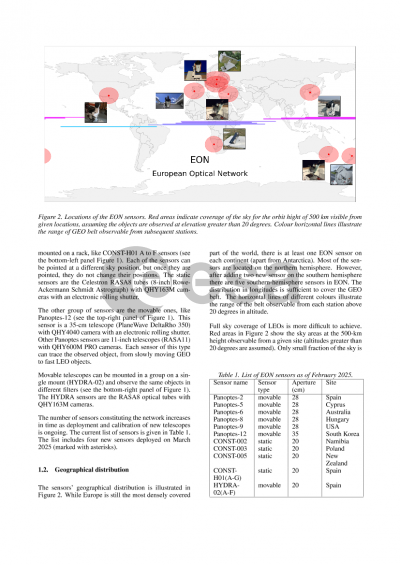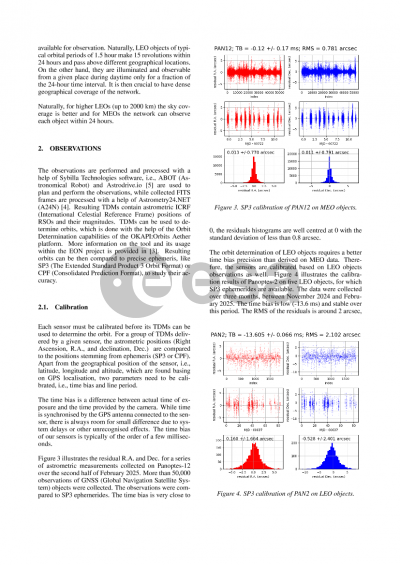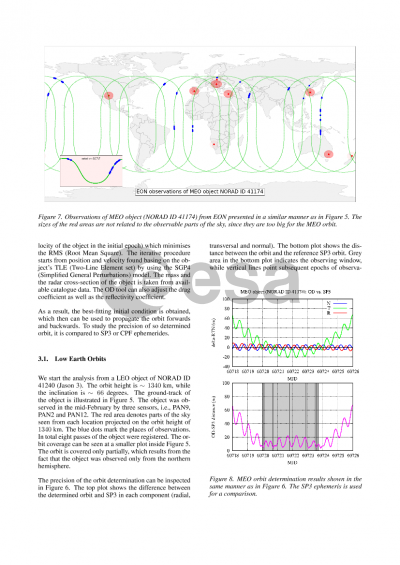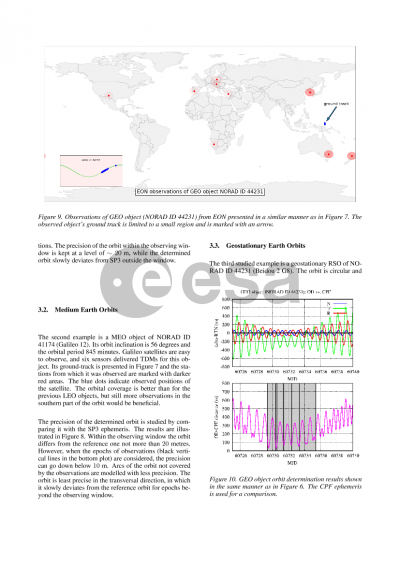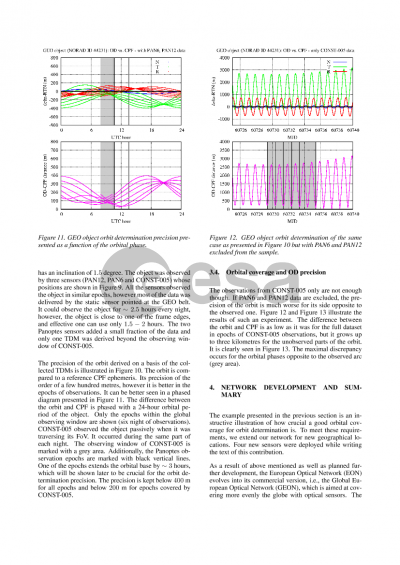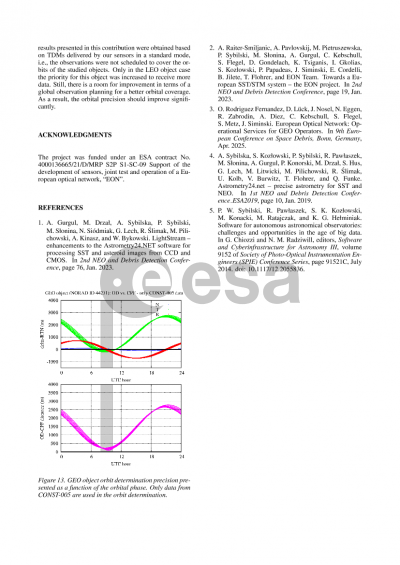Document details

Abstract
In this contribution, we will present the current capabilities of the European Optical Network (EON) in orbit determination (OD) of resident space objects (RSOs) based on astrometric observations performed with both static and tracking optical sensors. The OD precision will be demonstrated on example RSOs in the LEO, MEO and GEO orbital regimes.
The EON project is conducted as part of the European Space Agency’s Space Safety Programme. It is aimed at building and developing a network of optical sensors together with software for RSOs observation. The network consists of static and tracking sensors distributed all over the globe. The static Constellation sensors (CONST) are designed mainly to monitor the GEO region, while the Panoptes sensors (PAN) are fully controllable and can track objects in all orbital regimes.
The EON project is designed to automatically observe and analyse RSOs, both active and space debris. It delivers the observations for catalogue maintenance, fragmentation, payload separation, cluster monitoring. One of its goals is to determine RSOs orbits, which could be used to predict and avoid possible collisions as well as plan manoeuvres.
The sensors produce Tracking Data Messages (TDMs), which are then used to determine the orbits. The OD process can be performed on TDMs collected on one or more sensors. The Okapi Orbits service is used for the orbit determination. To illustrate the OD precision, the results will be compared with precise ephemerides (SP3/CPF) and the accuracy will be studied as a function of the number and temporal distribution of the observations as well as the orbital regime.
Preview
